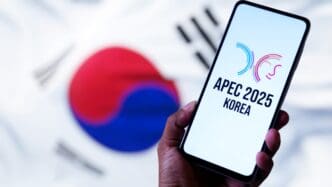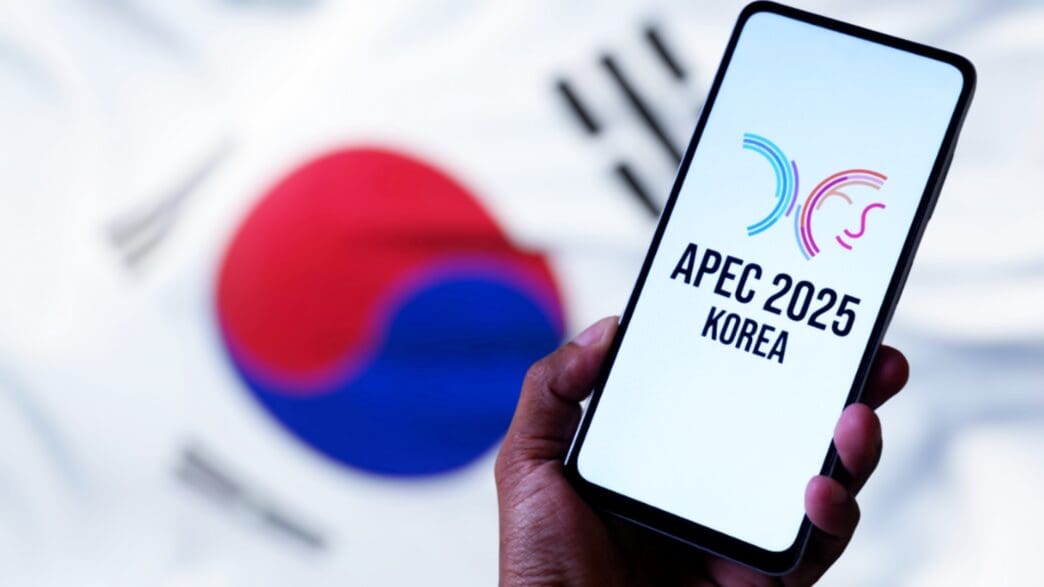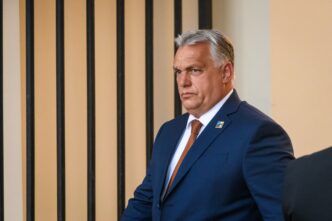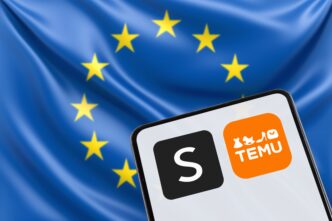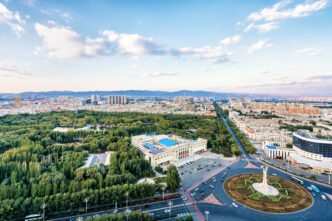Executive Summary
- President Trump arrived in South Korea, primarily focused on an anticipated trade truce with China, which would involve reduced U.S. tariffs in exchange for Beijing curbing fentanyl precursor chemical exports.
- Trump is scheduled to meet with South Korean President Lee Jae Myung to discuss an unresolved trade agreement and U.S. calls for increased defense spending contributions from allies.
- Hours before Trump’s arrival, North Korea test-fired a nuclear-capable cruise missile, which Trump dismissed, stating his focus remained on his upcoming meeting with Chinese President Xi Jinping.
The Story So Far
- President Donald Trump’s visit to South Korea is the final stop on an Asia tour defined by his administration’s tariff policies and escalating U.S.-China competition, which have significantly impacted the region. The trip aims to solidify a trade truce with China, following an established framework to pause tariffs, and continues Trump’s strategy of pressing allies like South Korea to increase defense spending and make substantial U.S. investments in exchange for trade concessions. These discussions are set against a complex geopolitical backdrop that includes ongoing North Korean missile tests and the intricate dynamics of the U.S.-Taiwan-China relationship.
Why This Matters
- President Trump’s visit to South Korea indicates potential stabilization for global markets through an anticipated trade truce with China, which could lead to tariff reductions and a commitment from Beijing to curb fentanyl precursor exports. However, the trip also underscores ongoing challenges with key allies like South Korea, as trade agreement talks remain stalled and pressure mounts for increased defense spending and immigration reforms. Furthermore, Trump’s dismissal of a North Korean missile test, prioritizing his meeting with President Xi, signals a strategic focus on economic diplomacy over immediate regional security concerns, while broader discussions on Korean peninsula peace are also on the agenda.
Who Thinks What?
- President Trump is optimistic about reaching a trade truce with China, anticipating a reduction in U.S. tariffs in exchange for Beijing’s commitment to curb fentanyl precursor chemical exports, while also pressing allies like South Korea for increased defense spending and investments.
- South Korea, through President Lee Jae Myung’s office, is seeking reforms to U.S. immigration laws and discussing trade, investment, and peace on the Korean peninsula, including a phased approach to its $350 billion investment pledge in the U.S.
- Taiwan’s Foreign Minister Lin Chia-lung is not concerned that President Trump would “abandon” the island during his meeting with President Xi, despite Trump’s fluctuating stance on Taiwan and his uncertainty about whether the issue would even be discussed.
U.S. President Donald Trump arrived in South Korea on Wednesday for the final leg of his Asia trip, where he is expected to meet with South Korean President Lee Jae Myung and Chinese President Xi Jinping. Trump expressed optimism about reaching a trade truce with China, anticipating a reduction in U.S. tariffs in exchange for Beijing’s commitment to curb fentanyl precursor chemical exports. His arrival followed North Korea’s test-firing of a nuclear-capable cruise missile hours earlier.
President Trump’s Schedule in South Korea
Arriving from Tokyo, President Trump landed in Busan before heading to Gyeongju, a historic South Korean town. He is scheduled to address a summit of CEOs and hold discussions with President Lee Jae Myung. Trump dismissed the earlier North Korean missile test, stating his focus remained squarely on his upcoming meeting with President Xi.
Speaking aboard Air Force One, Trump commented on the U.S.-China relationship, saying, “The relationship with China is very good. So I think we’re going to have a very good outcome for our country and for the world, actually.” The prospect of a trade war truce with China has already positively impacted global markets.
U.S.-South Korea Trade Discussions
While the main agenda item for Wednesday was the unresolved trade agreement between the U.S. and South Korea, neither side indicated an imminent breakthrough. The two allies had announced a deal in late July, under which South Korea would invest $350 billion in the United States to avoid certain tariffs, but talks on the investment structure have stalled.
President Trump has also pressed allies, including South Korea, to increase their defense spending contributions. South Korea, in turn, has sought reforms to U.S. immigration laws to facilitate more workers for factory construction, following a raid on a Hyundai Motor battery plant in Georgia.
The leaders were set to discuss trade, investment, and peace on the Korean peninsula, according to President Lee’s office. This reference includes potential engagement with North Korea, a topic Trump has repeatedly brought up, though Pyongyang has yet to publicly respond. North Korean leader Kim Jong Un has previously indicated openness to talks if Washington ceases pressuring him to abandon nuclear weapons.
Engagement with China and Regional Dynamics
President Trump is expected to meet with President Xi Jinping on Thursday, a meeting anticipated to define the next steps in U.S.-China trade relations. Negotiators from both countries reportedly established a framework for a deal to pause steeper American tariffs and Chinese rare earths export controls on Sunday, leading to a surge in global stock markets.
Christopher Padilla, a senior adviser at Brunswick Group, noted Trump’s preference for one-on-one meetings over large international gatherings, such as the APEC leaders’ summit, which he will skip. Instead, Trump will address the APEC CEO summit and hold bilateral meetings with several leaders, including Xi.
Taiwan’s Position in Bilateral Talks
Taiwan Foreign Minister Lin Chia-lung stated on Tuesday that he was not concerned President Trump would “abandon” the island during his meeting with Xi. Since taking office, Trump has maintained a fluctuating stance on China-claimed Taiwan while pursuing a trade deal with Beijing. Trump mentioned that Xi had assured him China would not invade Taiwan during his presidency, yet he has not approved new U.S. arms sales to Taipei. Trump told reporters on Wednesday that he was unsure if Taiwan would even be a topic of discussion with Xi.
Concluding Asia Engagements
President Trump’s visit to South Korea marks the conclusion of a rapid tour through a region significantly impacted by his administration’s tariff policies and increased U.S.-China competition. Earlier stops included Malaysia, where he announced new trade agreements and oversaw a truce between Thailand and Cambodia, and Tokyo, where he praised Japan’s Prime Minister Sanae Takaichi and finalized deals on trade and rare earths. Japan had previously pledged $550 billion in strategic U.S. investments, loans, and guarantees in exchange for tariff relief. South Korea has been pressed for a similar arrangement but has offered a phased approach to its $350 billion pledge.
The visit underscores the complex geopolitical and economic landscape of the Indo-Pacific, with President Trump navigating trade disputes, regional security concerns, and strategic alliances during his engagements.

